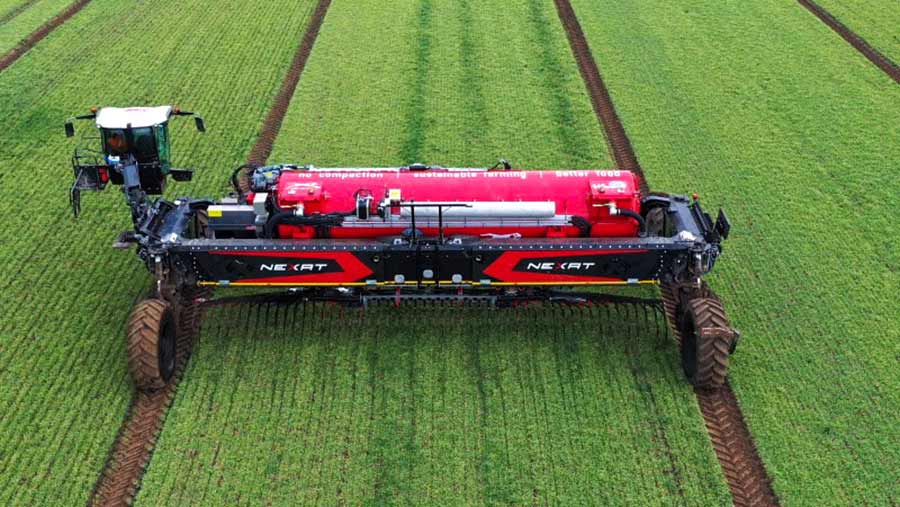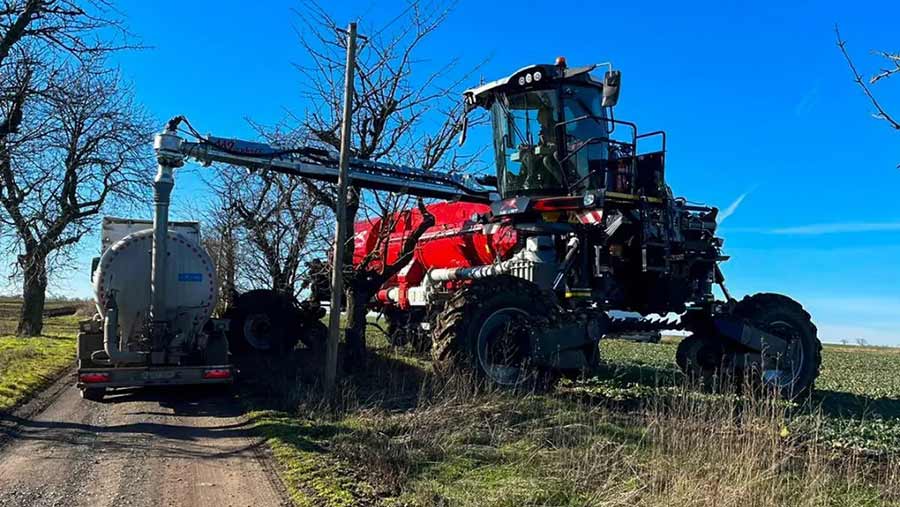Nexat adds monster slurry applicator to 14m-wide tractor
 Slurry application with the Nexat running on wide-spaced permanent wheelways © Nexat
Slurry application with the Nexat running on wide-spaced permanent wheelways © Nexat With slurry and digestate application added to the portfolio of interchangeable implement modules, the ambitious Nexat wide-span power unit project has moved a step nearer the “one machine for all” vision.
With tracks or wheels spaced 14m apart, the Nexat leaves as much as 95% of the growing area untouched, with permanent controlled-traffic wheelways providing a firm surface for all operations.
The 32cu m steel vacuum tank feeds trailing shoe or disc harrow applicators, with precision farming and isobus control functions providing near-infrared nutrient sensing to inform variable-rate application, and section control to minimise overspreading.
Developed with German specialist Wienhoff, it joins existing modules for cultivation, sowing and planting devised with Vaderstad, and a tank and boom module from Dammann for spraying up to 70m in one pass.
See also: Ontario farmer gets robot fleet to complete arable fieldwork
Nexat itself has developed a grain harvesting module with reportedly more than 50% greater capacity than a traditional large harvester.

Filling from a nurse tanker illustrates the scale of the machine © Nexat
Prototype testing
Prototypes of the wide-span tractor unit, which is powered by two independent diesel engines, each developing 550hp and generating electricity for drive motors, have been working on test farms for several years.
This year, the company started series production of the latest-generation design and is distributing the machines worldwide.
The design brings larger scale and modern technology to a concept that has existed since the days of steam ploughing engines, and last saw serious development in the early 1990s.
This time round, the potential benefits of controlled-traffic farming are more widely recognised, with farmers in the UK, Europe and Australia, in particular, practising it to some extent using permanent wheelways established mainly for tractor operations such as spraying, fertiliser spreading and carting grain off the combine.
The objective is to minimise traffic across the cropped area to allow soil structure to develop naturally with minimal intervention and lower use of fertiliser and pesticides, resulting in more cost-effective production, while delivering higher yields with reduced carbon and other emissions.

